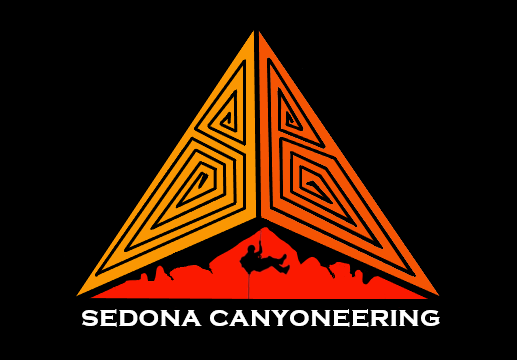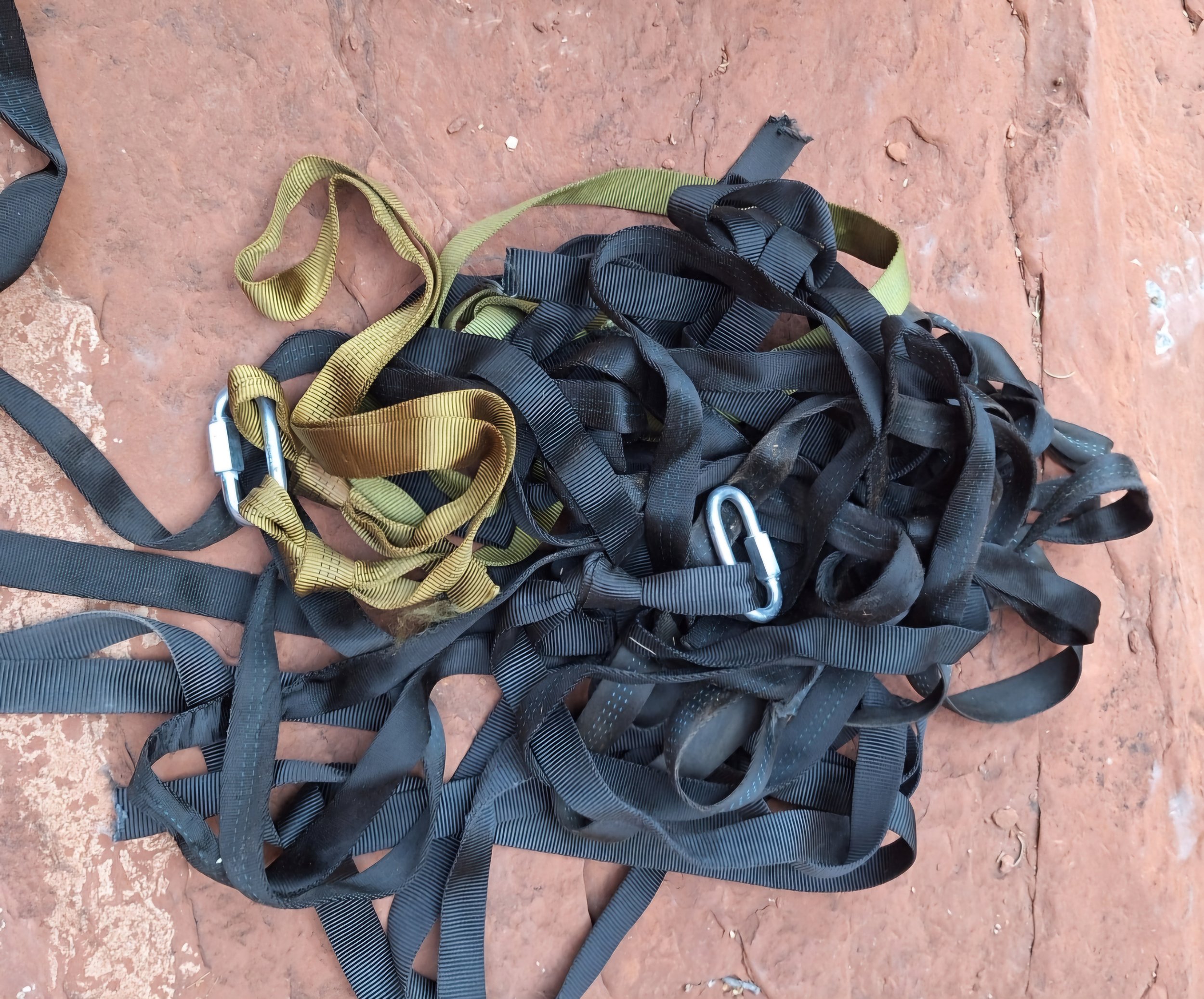
ANCHORS
When traveling to a new location it’s important to become familiar with local ethics, anchor types, and special considerations for the area. These standards are aimed to improve safety and reduce environmental impact. Anchor building skills and appropriate materials are required in order to safely descend a canyoneering route. In order to help visitors better prepare for their canyoneering adventure, I have provided detailed descriptions of the types of anchors that you will likely encounter in the red rock region of Sedona. The information provided on this website is NOT a substitution for experience, training, or good judgement.
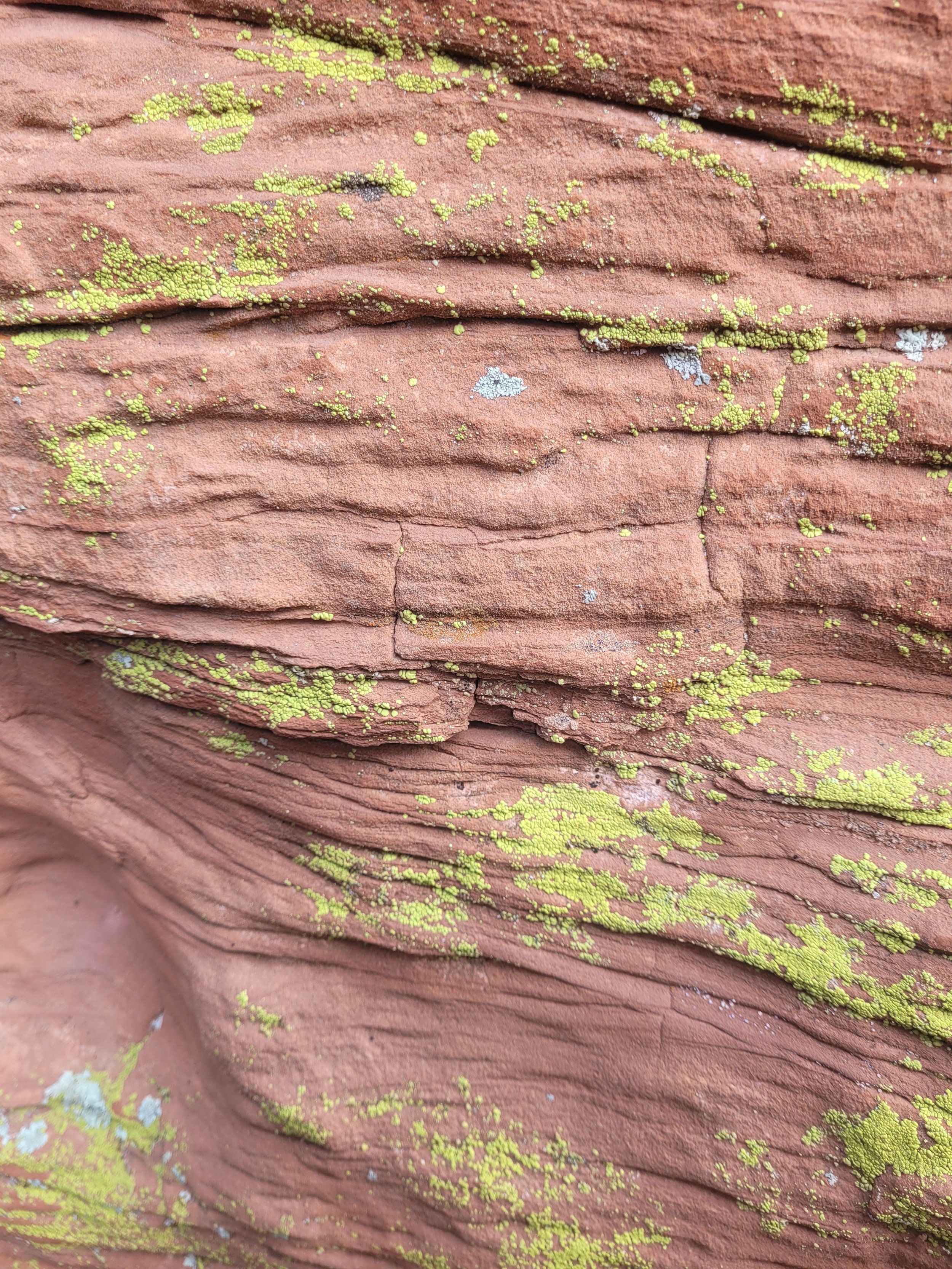
The 4 Parts of an Anchor
The Source, The Webbing, The Knot, and The Rapide.
#1- The Anchor Source
The first part of an anchor is the source, or object that will be used to support the weight of the rappeler. In Sedona, the most common anchor sources are trees and boulders.
Trees- Big, healthy, happy trees such as pine, cypress, and juniper make good candidates for an anchor source. Marginal sources such as manzanita, cat claw, and locust bush should be avoided unless they are the only option for a safe anchor source. Trees closer to the edge tend to work best and will reduce the likelihood of retrieval issues and environmental impact (rope grooves). When inspecting trees, look for obvious damage to the limbs and bark. If the tree has been damaged, the anchor may need to be relocated. Although the base of the tree is the strongest, placing an anchor higher up in a tree may allow for an easier dismount, resulting in less wear on the tree, gear, and surrounding terrain.
Boulders- If trees are not available, the next best anchor source would be a large boulder that will undoubtedly support the weight of the rappeler. For the most part, trees will be in abundance, and boulders will rarely be used as a primary anchor source. Boulders on sloping surfaces should be avoided unless they appear to be the safest option. Inspect each boulder carefully, assessing the rock quality and size.
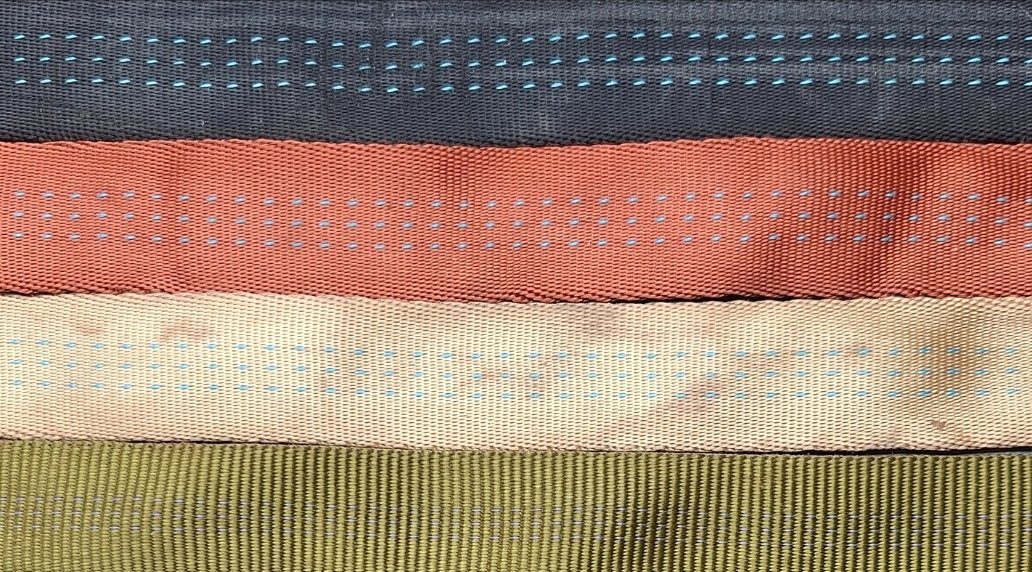
#2- The Webbing
The second part of an anchor is the webbing. One-inch tubular nylon webbing of climbing grade has become the standard across the canyoneering community. Black webbing is the color adopted by national parks and most (if not all) regions in the United States. Black webbing is the easiest to inspect for discoloration or fading because it is the most noticeable. Bright colored webbing tends to attract rodents and is also an eye sore to other recreationalists. If webbing is of questionable quality, it should be removed, replaced, and disposed of properly. Adding another loop of webbing and leaving webbing of questionable quality promotes poor canyon etiquette.
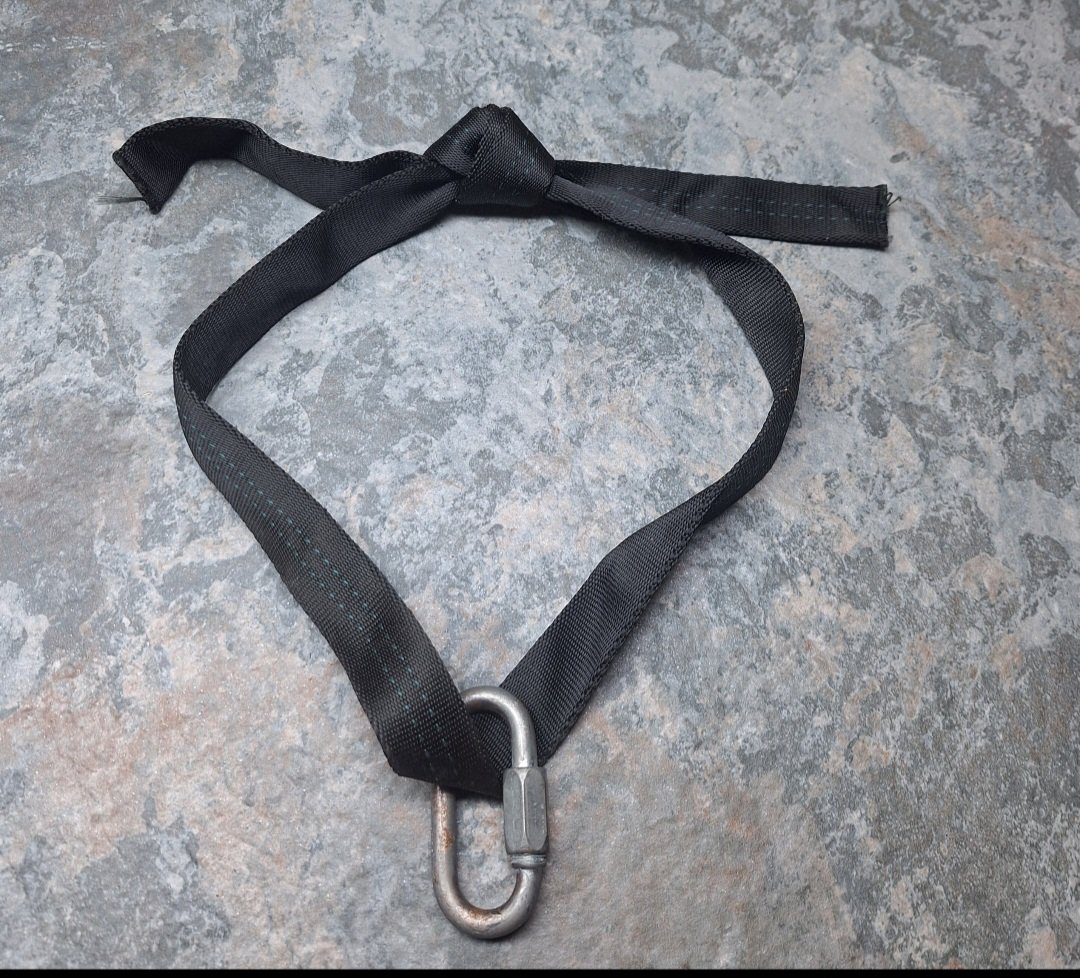
#3- The Knot
The knot used to tie an anchor should be simple, safe, and easy to inspect. A water knot with 3- 4 inch tails is the Sedona Standard. Slip-knots, flat overhand bends, and other knot configurations should be converted to a water knot.
Master knots should be used on bolted anchors for redundancy. Master knots should be avoided on single loop anchors as they make them difficult to modify.
#4- The Rappel Ring
The last part of an anchor is known as the rappel ring or quick link and is used to attach the rope to the webbing. The Sedona standard is 5/16” quick links stamped with load ratings (in KN or LBs) and the label WLL or SWL . Climbing grade quick links are the most trusted, but stamped quick links from the local hardware store are good enough and can be easier to acquire. Un-marked quick links from the internet are NOT rated for climbing. Using a quick link that is too small can result in issues with retrieval or a stuck rope, and one that is too large can allow room for a carabiner or knot to slip through, resulting in failure.
The rappel ring should be inspected to make sure the gate is closed and that it’s rated and of appropriate size. Rappel rings that are un-marked or of inappropriate size should be removed and replaced.
The two most important things to have when entering a canyoneering route are an experienced leader and an anchor building kit.
My Sedona Anchor Kit: Webbing, quick links, headlamp, lighter, knife, nut tool, adjustable wrench
Anchor types
The most common anchor type in Sedona is a sling, or single loop of webbing around a tree. The majority of routes descend terraced ledges with large juniper or pine trees that provide solid anchor sources. Trees are the source for over 90% of anchors in the Red Rock Region. The second most common anchor source are large boulders that can undoubtably support the load of the rappeler. Lastly, bolted anchors are placed sparingly to increase safety and reduce environmental impact.
Single Loop Anchors
Single Loops are my go-to for a few reasons, the main reason being…they are simple. These anchors are easy to make and require a basic knot that is quick and easy to inspect. A water knot with 5–6-inch tails is the standard for all webbing anchors. Single loops also require little webbing and are easy to modify if needed. An anchor with more than 2 single loops of webbing should be reduced down to 1-2 loops of good quality webbing.
Wrap 2 Pull 1 Anchors
are the second most common anchor type in the red rock region and are commonly used to fix an anchor higher up in a tree. Placing an anchor high in a tree may make for an easier start to your rappel and reduce contact between the rope and the sandstone. When placing a wrap 2 pull one it is best practice to set the water knot on the front side of the tree, this reduces tension on the knot and makes it easier to inspect.
Bolts-
are rare in Sedona and have been placed to increase safety and reduce environmental impact. Bolting has become a controversial topic over the years. I personally believe bolted anchors (properly installed) can be a safer and more sustainable option when compared to traditional anchor types. Bolts should be maintained and installed by experienced route developers. If a problem with a bolted anchor exists, please reach out to us and we will get it resolved. Bolted anchors should have a master knot for redundancy.
This bolted anchor is set up perfectly with quick links through the bolt hangars and a master knot for redundancy. The sun-bleached webbing was replaced with new black webbing in the same configuration.
The most common anchor type in Sedona is a single loop anchor, made with a water knot configuration.

BAD ANCHOR: anchors should be placed on bomber sources, such as big trees and boulders. Marginal rock features such as flakes and arches should NOT be used for anchors.

BAD ANCHOR: An overdone anchor can be difficult to inspect and should be reduced sown to a single strand.
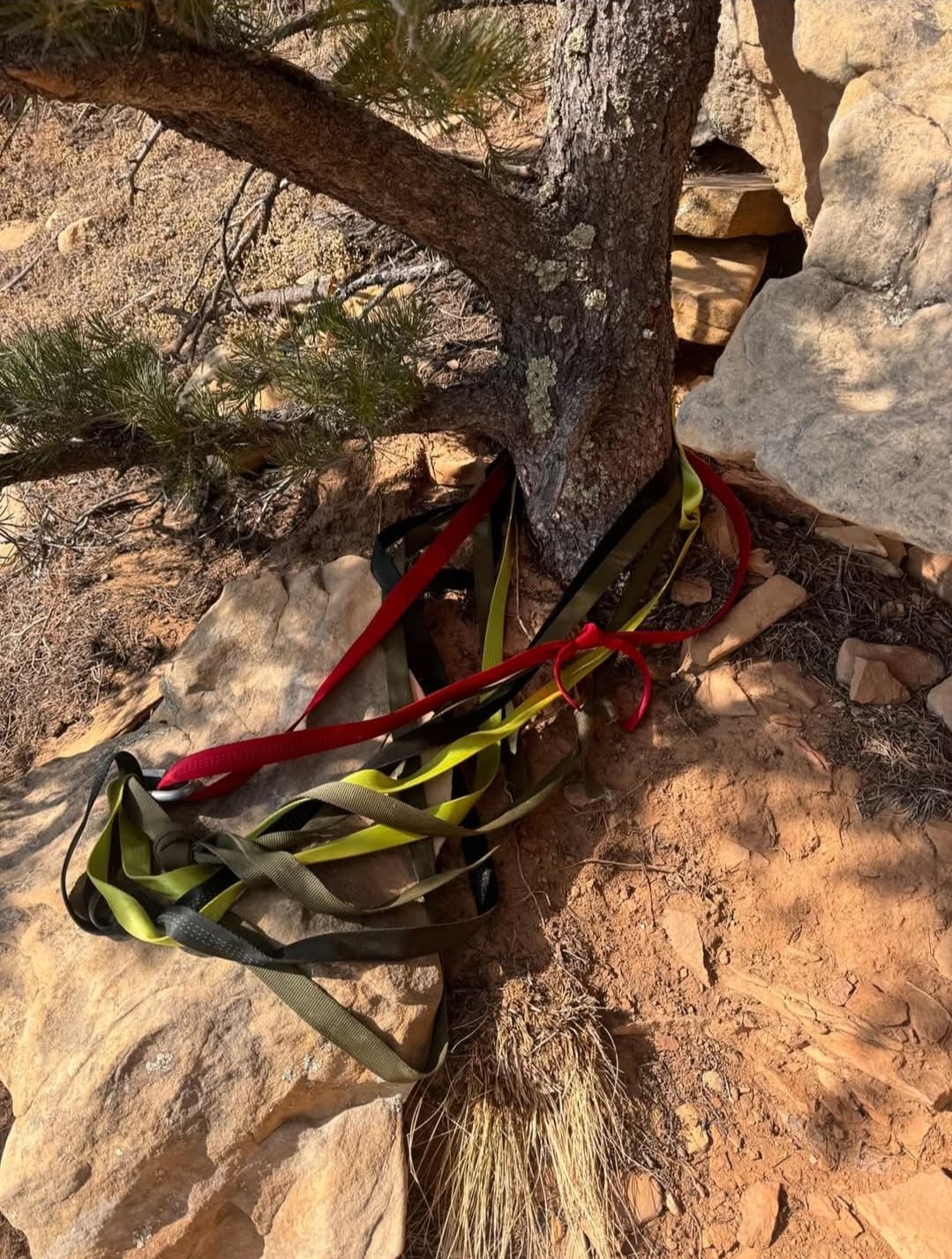
BAD ANCHOR: Cluttered anchors and bright webbing are not only an eye sore but can be difficult to inspect. Reducing the anchor to a single loop is a quick fix that sets a good example. Photo by Kevin Iosue

After a long day of cleaning and modifying anchors, Trish Baker enjoys a well-earned Coke.
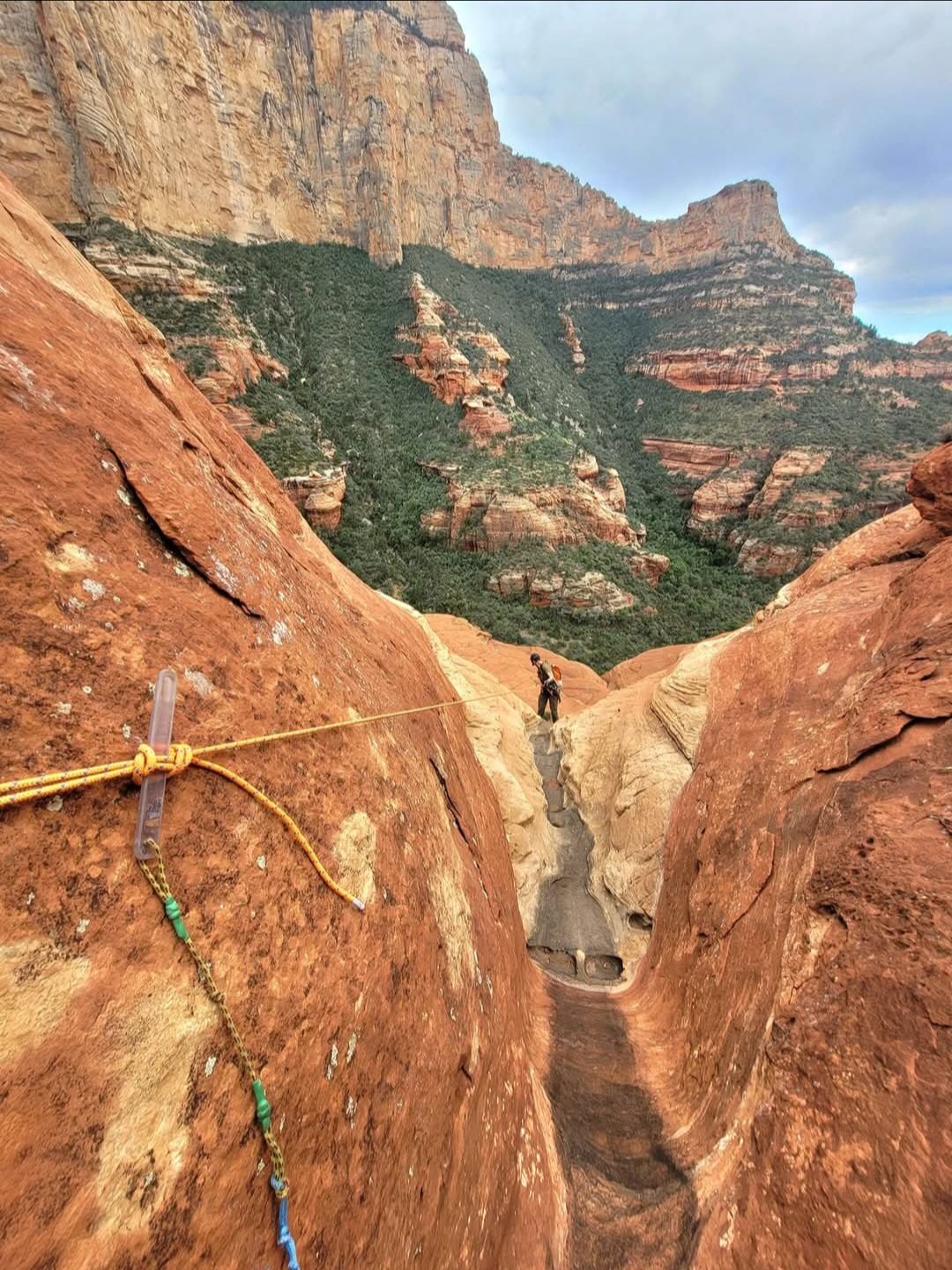
Fiddle Stick (pictured) or retrievable anchor can be used to prevent retrieval issues and reduce impact on the environment (rope grooves).
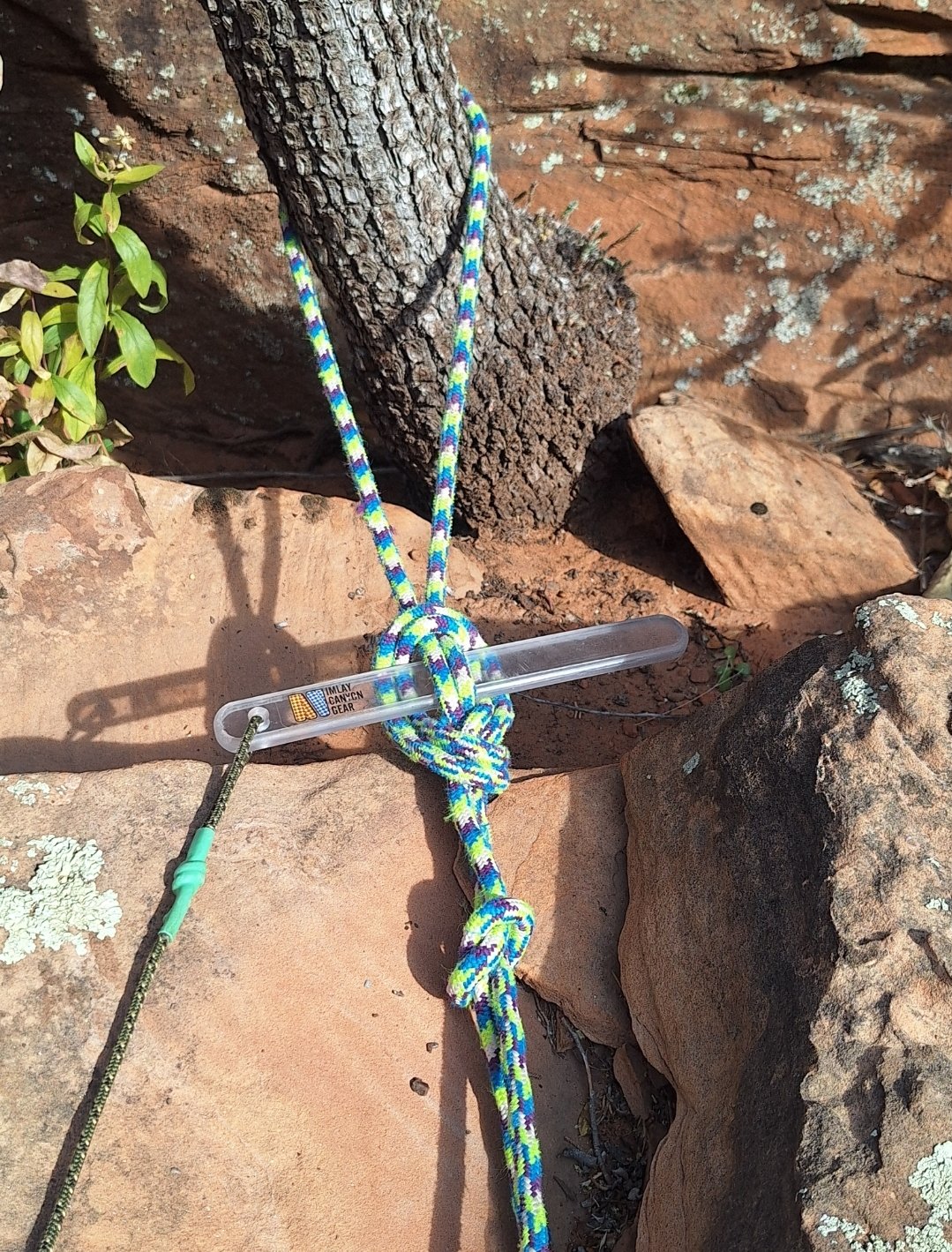
A Fiddle Stick with a knot in the tail for a safety, just don't forget to remove the knot before the last person.
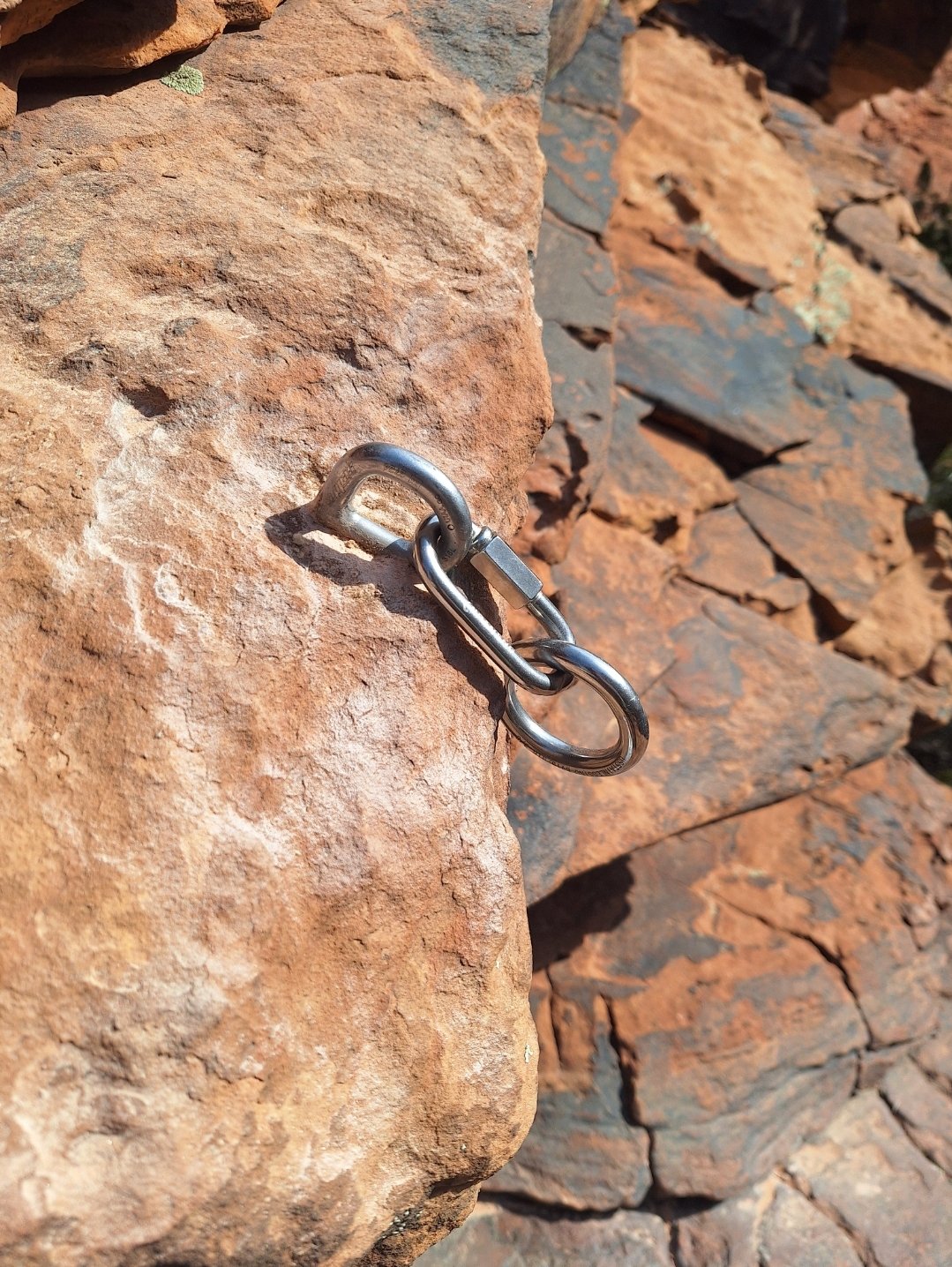
GOOD ANCHOR: A glue-in bolt with a climbing grade quick link-link and rapide or rap ring.

Girth- hitching trees is NOT a safe or sustainable option. Girth hitches are likely to cause stress and damage to the tree.

BAD ANCHOR: A rapide or quicklink that is too big allows room for block or carabiner to slip through. 5/16" quicklinks stamped with a load rating (KN) have become my personal standard.
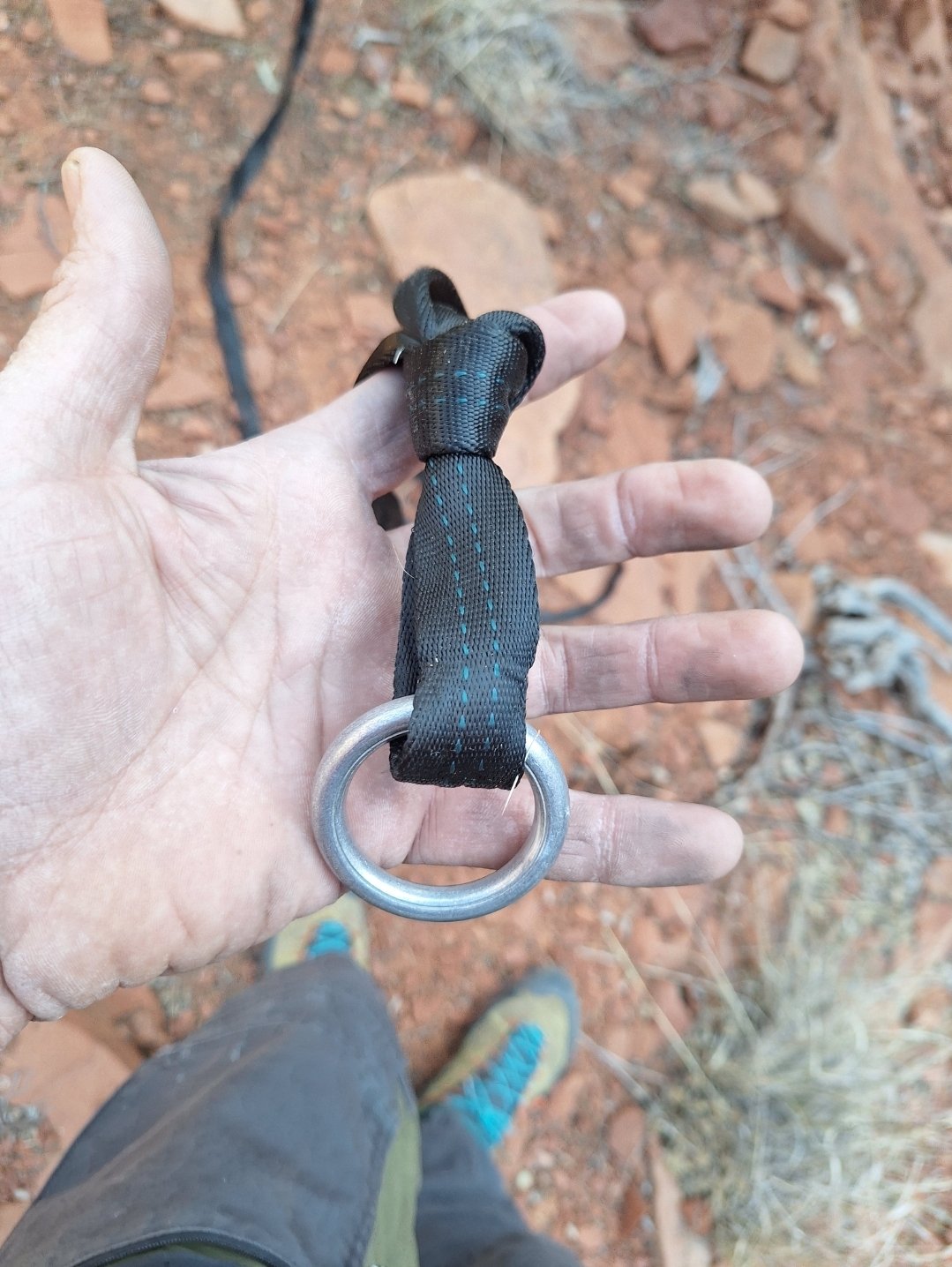
Aluminum "bail-rings" or rappel rings are NOT a sustainable option especially for highly trafficked routes. Un-rated or un-stamped rappel rings should be removed and replaced.
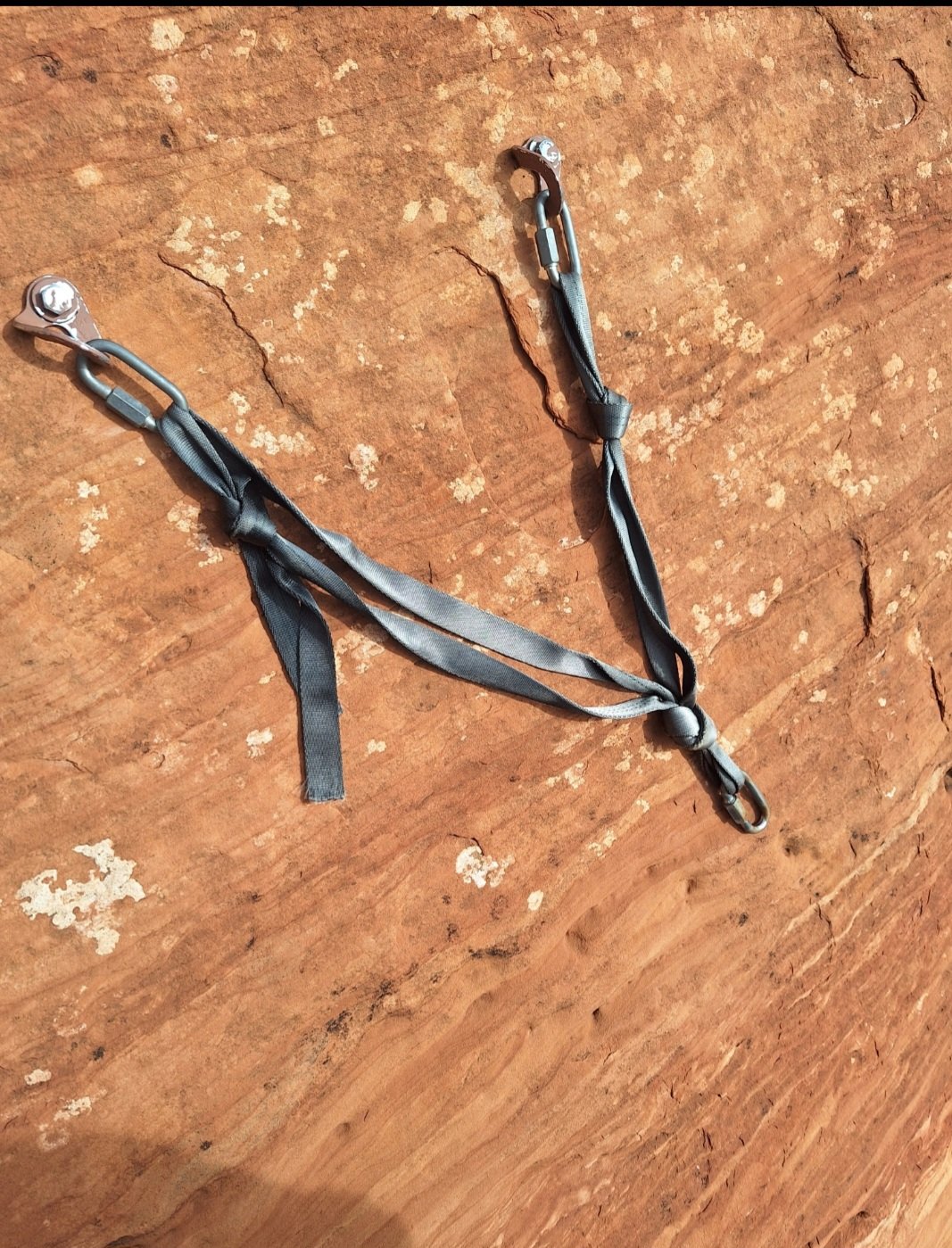
Faded, Sun-bleached, and damaged webbing should be replaced.

GOOD ANCHOR: A bolted anchor near the edge, equalized with a tasteful amount of webbing, and made redundant with a master knot.
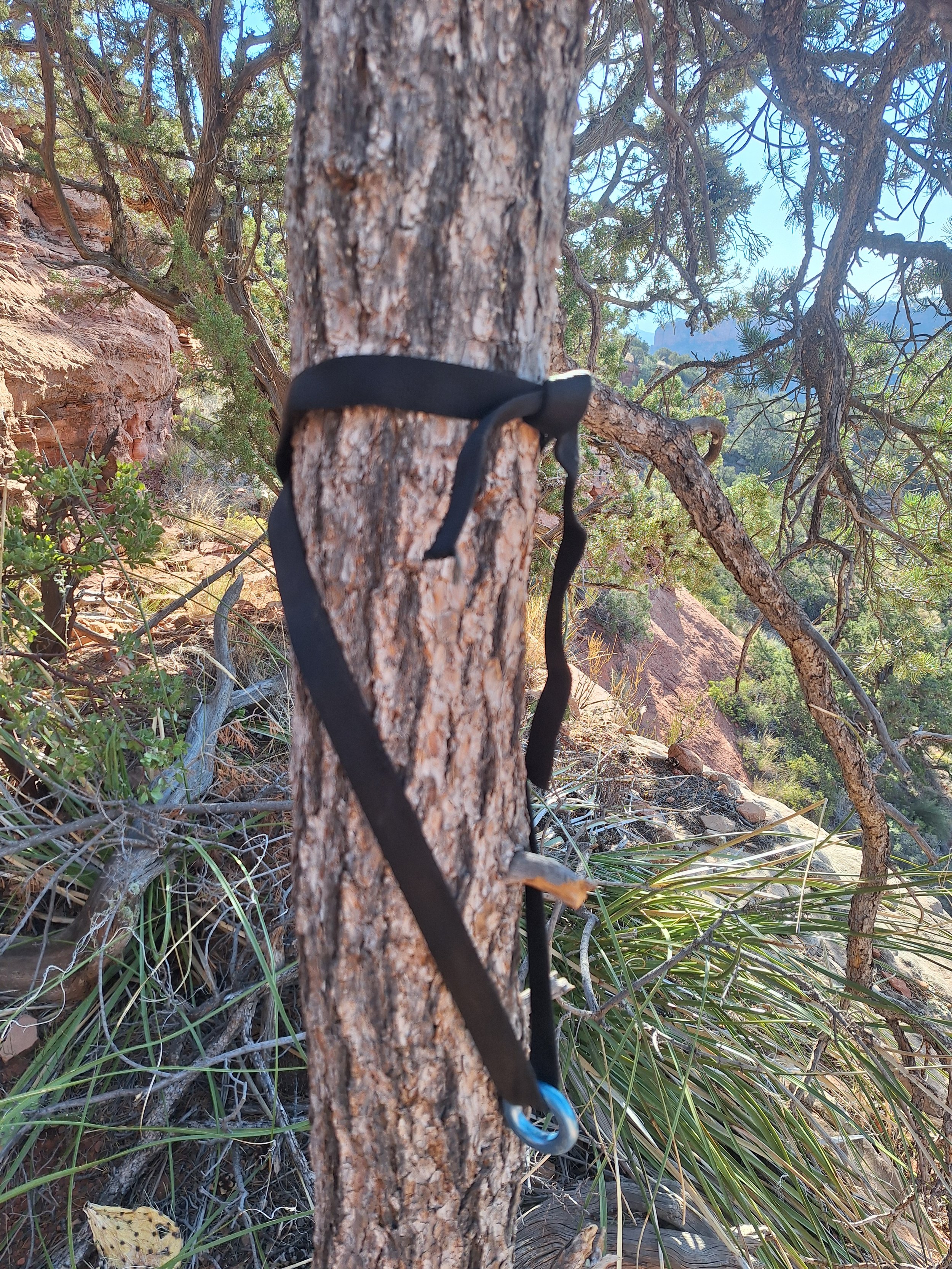
GOOD ANCHOR : A wrap 2, pull 1 helps with anchor placement on this big tree. Placing the anchor higher in the tree allows for easier starts and can reduce impact on the environment.
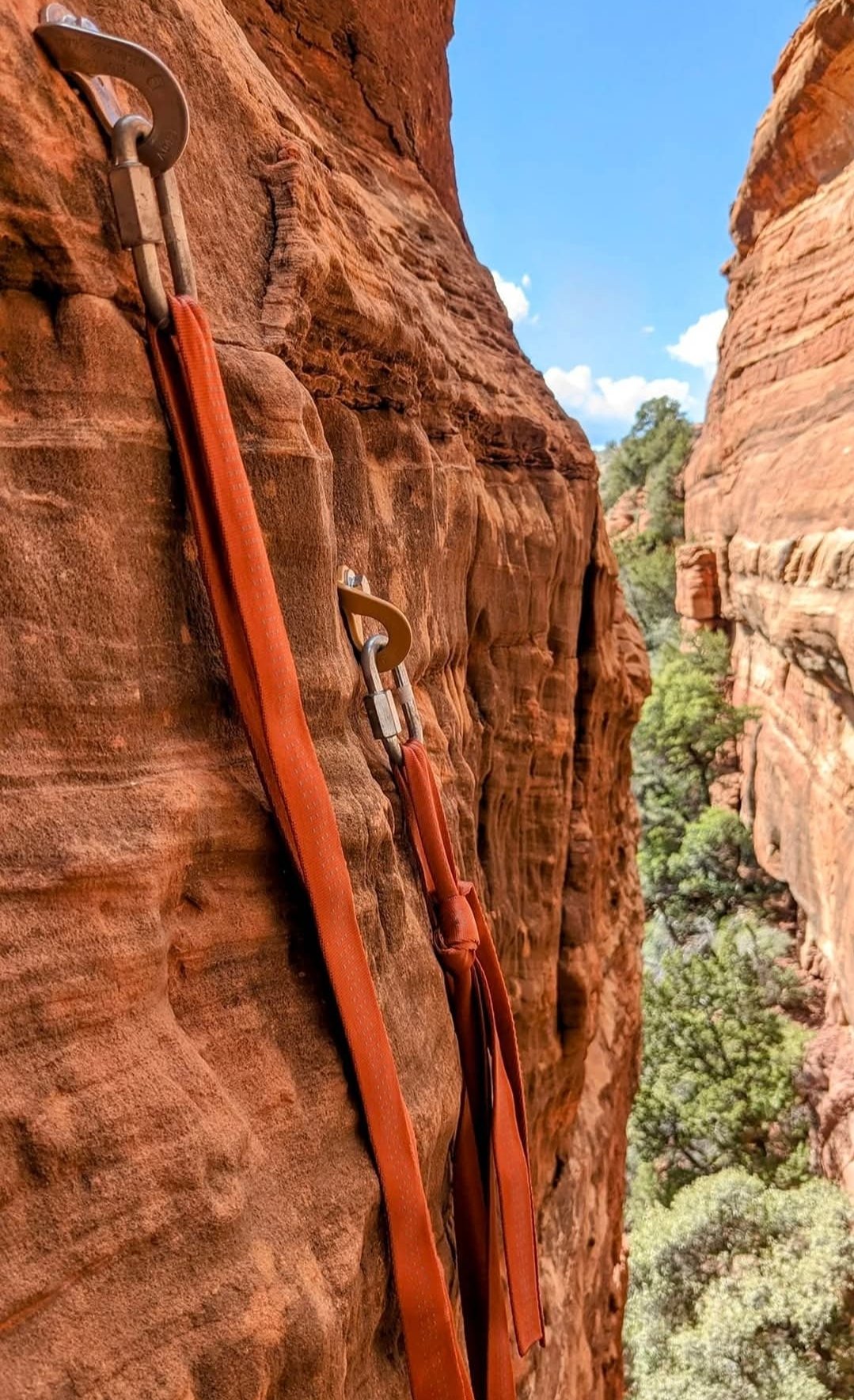
Bolted anchors are a rarity in the red rocks and are placed to address safety and environmental concerns.
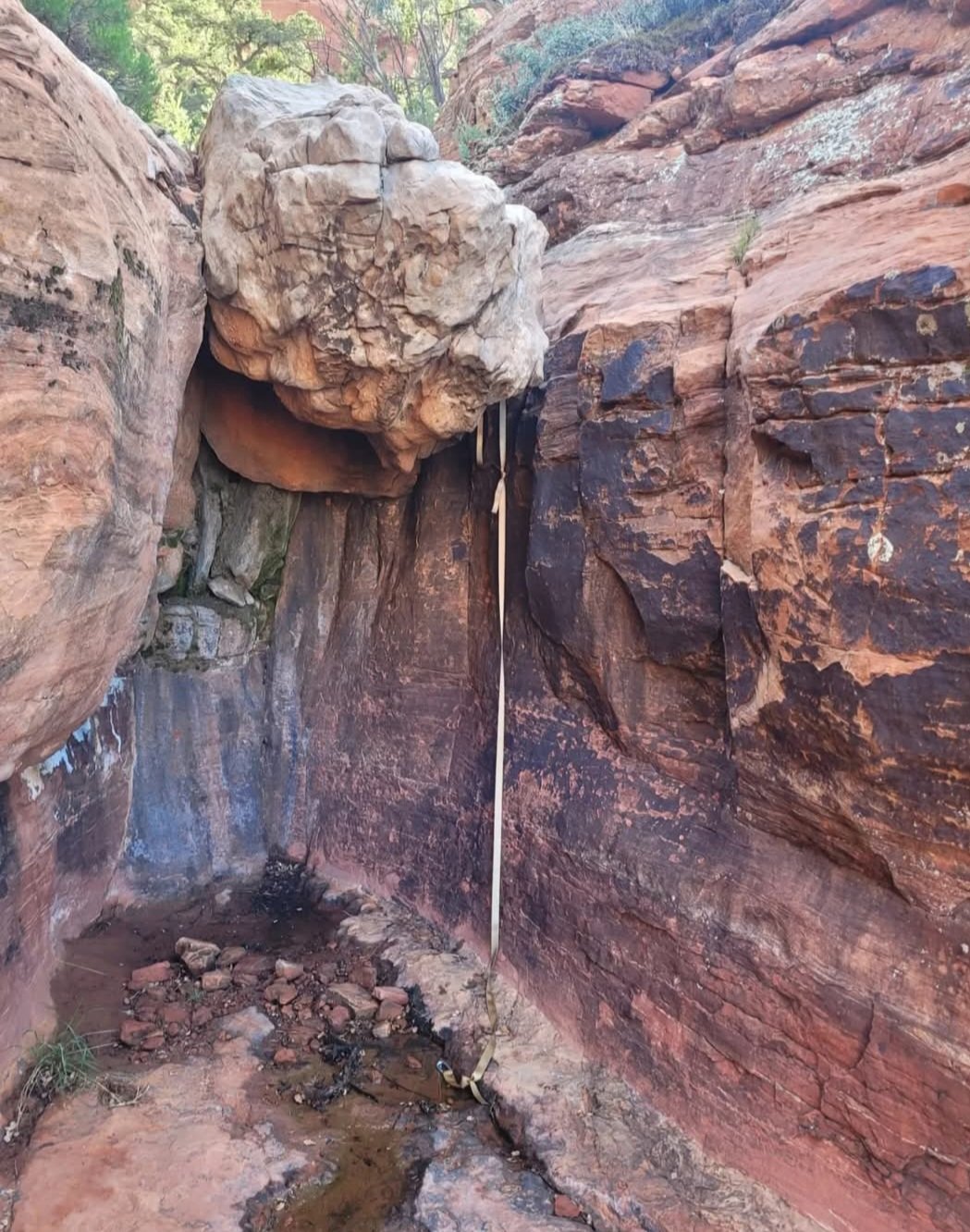
BAD ANCHOR: Over extended anchors are an eyesore and in this scenario places the rappel ring in the watercourse.

BETTER ANCHOR: Shortening the extension is a quick and easy fix that requires very little effort.
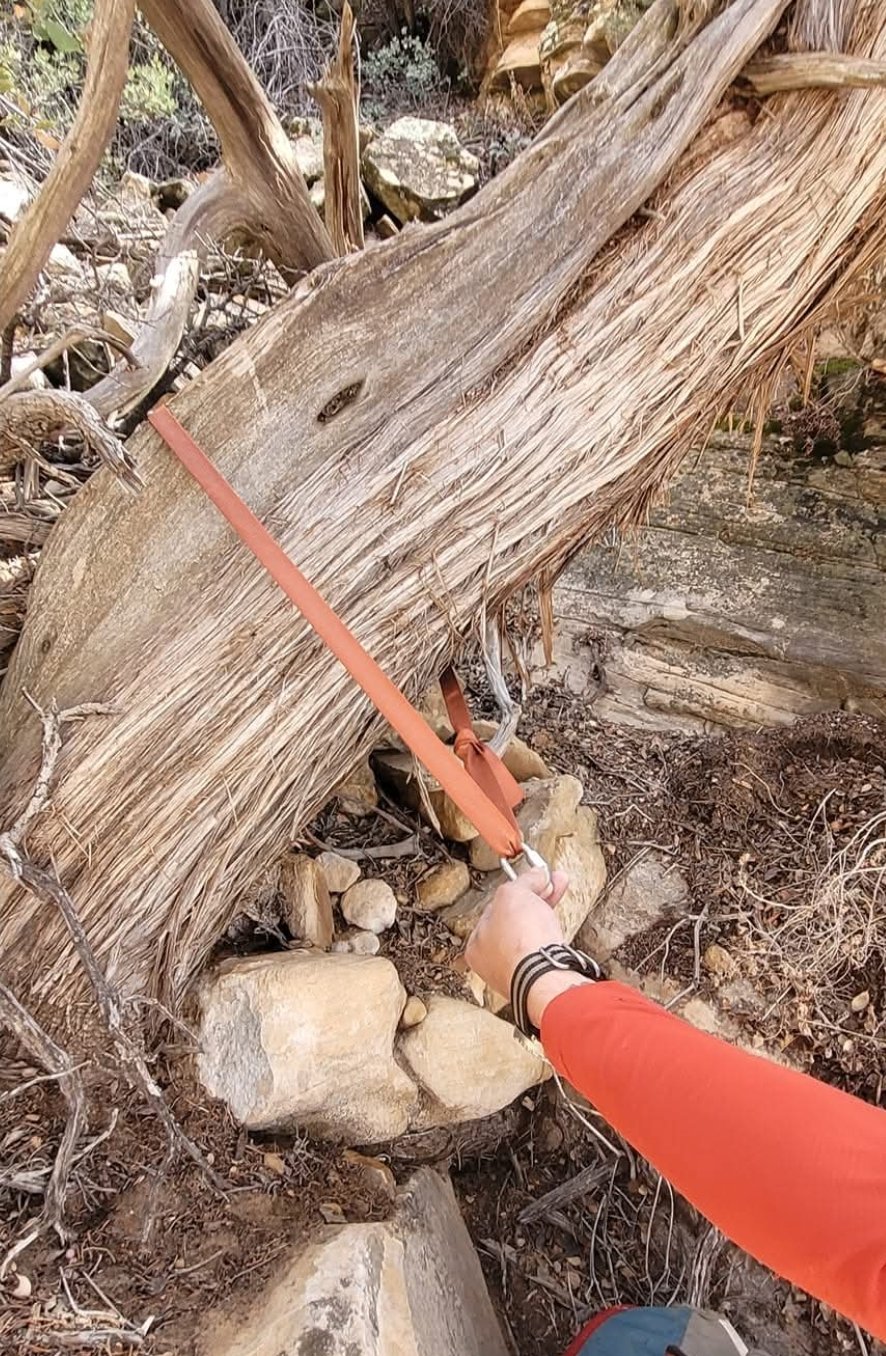
GOOD ANCHOR: A single loop anchor around a big tree is often less obtrusive and easy to inspect.

Before: A perfectly sound anchor was backed up with an un-equalized strand of red webbing.

After: Removing the extra red webbing makes a simple and easy to inspect anchor.

BAD ANCHOR: Three separate loops of bright webbing are joined with one extra-large quick link. Photo by Trish Baker

BAD ANCHOR: Different types of cord and webbing along with different rapides make for a difficult to inspect anchor. Photo by Brenda Vail.
Special considerations can be addressed by reviewing anchor techniques that should be avoided due to their impact on the environment and overall safety.
Girth Hitching a tree is common practice that should be avoided if possible. The loop on a girth hitch cinches down tight on a tree, eventually causing damage and compromising its’ integrity. Girth hitched anchors can also slip or fail if they are clipped into at the wrong point. Thirdly, girth hitches with an extended single strand are prone to twisting once weighted, and twisting is no good. Lastly, if a rescue scenario were to come into play a girth hitch would be less than ideal for rigging. The upside to girth hitching is that it uses less webbing when extending an anchor. If extending an anchor is necessary, a water knot with an extended strand would be a safer option.
Cairn Anchors are constructed by stacking or grouping together small boulders into a large pile for an anchor source.
Deadman Anchors are built by using a stick, rock, or object buried below the ground as the anchor source.
Cairn & Deadman anchors are unsustainable and difficult to inspect.
Sourcing materials to construct these types of anchors requires digging and moving rocks, which can disturb archaeological sites and damage the sensitive terrain. Secondly, these sources are unsafe and unsustainable in comparison to the other anchor types listed above
Sand traps are retrievable anchors that use sand sourced from nearby to weigh down the contraption in order to “ghost” a canyon. Due to the abundance of archaeological sites, and already established anchors, sand traps should NOT be used in the Red Rock Region of Sedona.
Do’s & Don’ts
A simple list of Do’s & DON’TS is an easy way to become familiar with the Sedona-specific practices when it comes to building and managing anchors.
Do’s
Do- Bring an anchor building kit
Do- Use 1 inch black or neutral colored webbing (tan, rust) of climbing grade webbing
Do- Inspect every anchor thoroughly
Do- Modify or replace anchors of poor quality
Do- Use retrievable handlines
Do- Pack out trash and extra webbing/ materials
Do- Use single loop and wrap 2 pull 1 style anchors
Do- Remove bright and obtrusive colored webbing
Do- Remove quicklinks and rappel rings of questionable quality
Do- Use retrievable anchors to minimize rope grooves
Do- Use water knots
Do- Use bomber anchor sources such as large trees and boulders
Do- Use a tasteful amount of webbing
DON’TS
Do NOT- Enter a route without anchor building skills or materials
Do NOT- Use bright or obtrusive webbing, or webbing of poor quality
Do NOT- Rappel from anchors questionable in quality
Do NOT- Leave fixed hand lines
Do NOT- Use ribbons or cairns to mark trails
Do NOT- Leave webbing or rapides of poor quality on a route
Do NOT- Use obscure or hard to inspect knots
Do NOT- Girth hitch trees
Do NOT- Use marginal anchor sources such as bushes and manzanita
Do NOT- Source materials for deadman/ cairn anchors
Do NOT- Use sand traps or dig
Do NOT- Back up a bomber anchor on a marginal anchor
Do NOT- Over extend anchors
Do NOT- Remove an existing anchor without leaving a sound anchor in its place.
For More Information on Rigging and Low Impact Practices Click
Here —>
